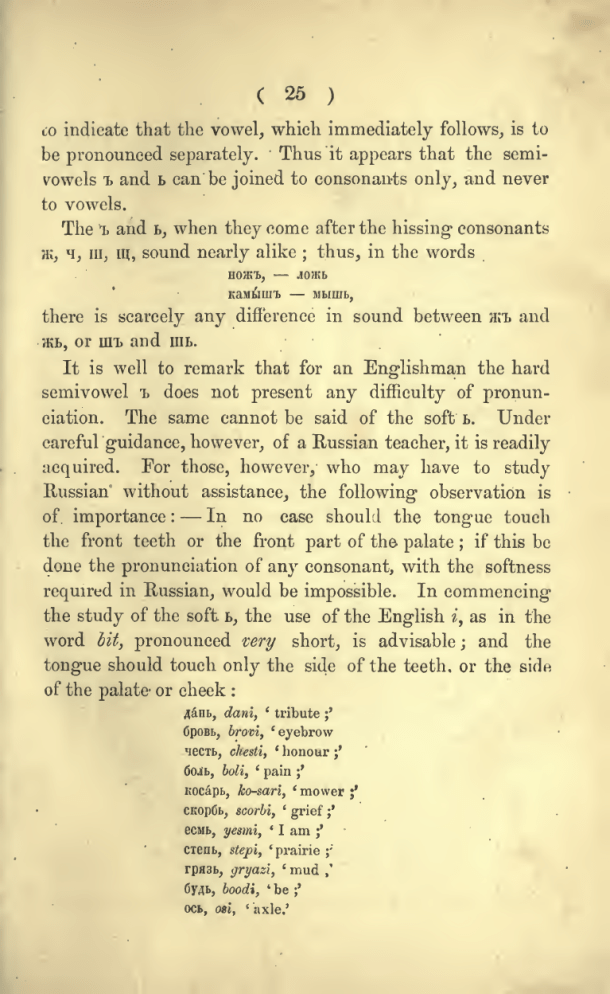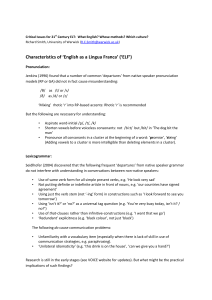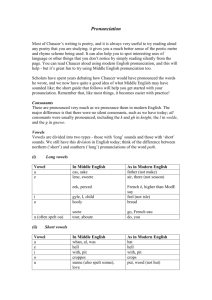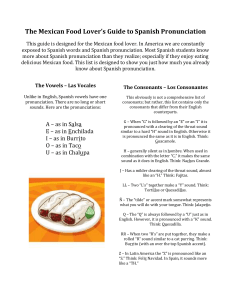Russian Pronunciation Guide: Soft Consonants & Vowels
advertisement

25 ( ) that the vowel, which immediately follows, is to be pronounced separately. Thus it appears that the semico indicate vowels i> and L can be joined to consonants only, and never to vowels. The JK, H, 1> ill, and b, when they come after the hissing consonants m, sound nearly alike thus, in the words ; JOJKb BOHfb, KaMUIUT) there 5Kb, Mblinb, difference in is scarcely any or int and nib. remark that sound between Hit and an Englishman the hard semivowel T> does not present any difficulty of pronunciation. The same cannot be said of the soft b. Under It is well to for careful guidance, however, of a Russian teacher, it is readily For those, however, who may have to study acquired. Russian' without assistance, the following observation is In no case should the tongue touch the front teeth or the front part of the palate if this be of. importance : ; done the pronunciation of any consonant, with the softness In commencing required in Russian, would be impossible. the study of the soft the use of the English i, as in the word bit, pronounced very short, is advisable ; and the tongue should touch only the side of the teeth, or the side b, of the palate or cheek : ' tribute AaHb, dani, ;' ' eyebrow f honour;' CpOBb, broviy lecib, chesti, ' fiOJb, boli, pain ;' f Kocapb, ko-sari, mower * CKOpOb, scorbi, * grief I CCMb, yesmi, am ;' ;' ; Cienb, stepi, 'prairie ' rpfl3b, gryaz'i, ' 6y4b, boodi, OCb, o*i, be 'axle,' mud ;' ; ,' ;'








